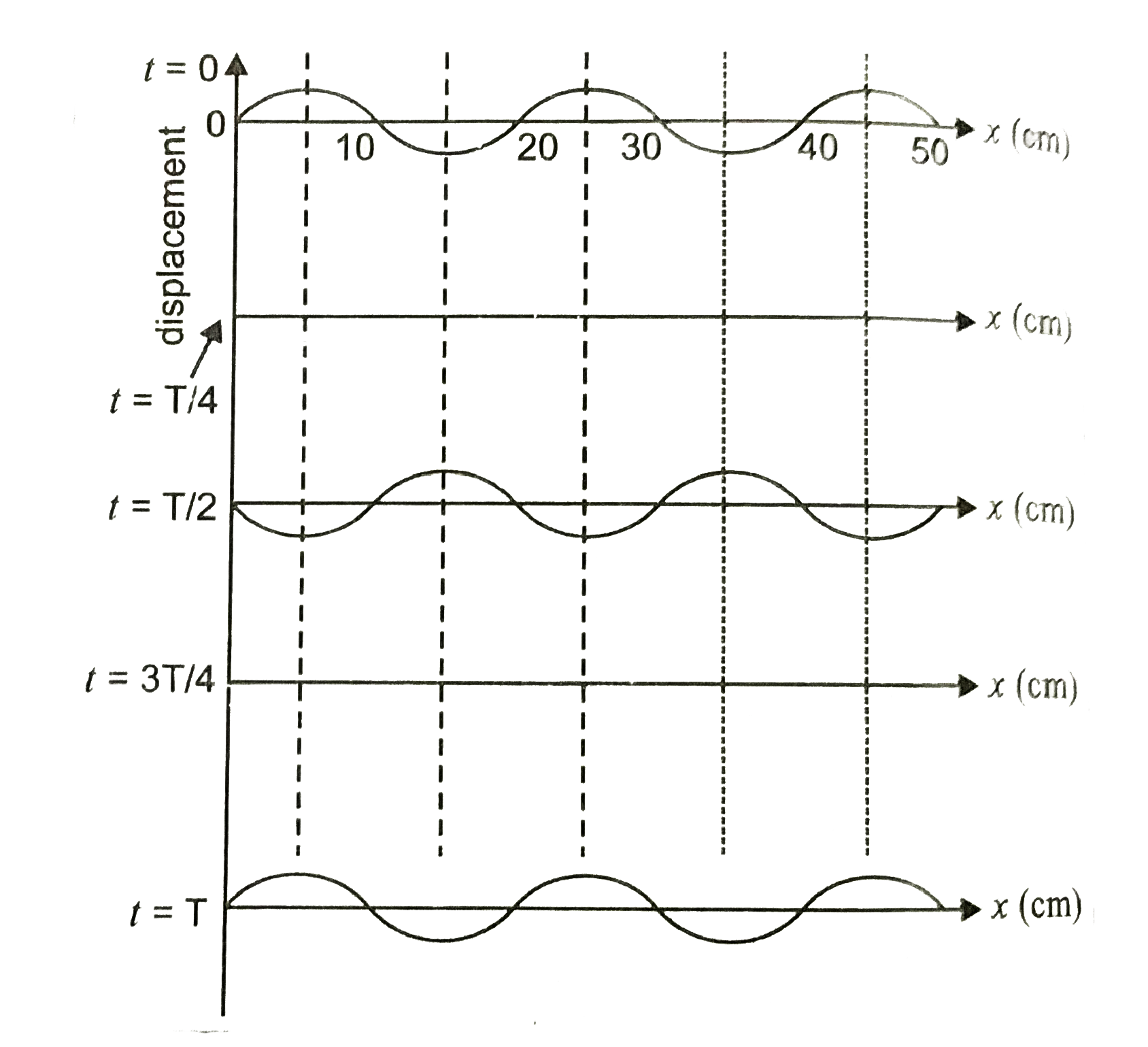A sine wave is travelling on a stretched string as shown in figure. The end A of the string has a small light ring which can slide on a smooth rod. The wave reaches A at time t=0.

(i) Write the slope of the string at point A as function of time.
(ii) If the incoming wave has amplitude a, with what amplitude will the end A oscillate?
The correct Answer is:(i) zero
(ii) 2 a
Step by step video, text & image solution for A sine wave is travelling on a stretched string as shown in figure. The end A of the string has a small light ring which can slide on a smooth rod. The wave reaches A at time t = 0. (i) Write the slope of the string at point A as function of time. (ii) If the incoming wave has amplitude a, with what amplitude will the end A oscillate? by Physics experts to help you in doubts & scoring excellent marks in Class 11 exams.
Updated on:21/07/2023Topper's Solved these Questions
Similar Questions
Knowledge Check
The velocity of wave in a stretched string is proportional to
A√TBTC1/TD1/√TA sinusoidal transverse wave is traveling on a string. Any point on the string
Amoves in the same direction as the wave.Bmoves in simple harmonic motion with a different frequency than that of the wave.Cmoves in simple harmonic motion with the same angular frequency as the waveDmoves in uniform circular motion with a different angular speed than the wave.A pulse of a wave train travel s along a stretched string and reaches the fixed end of the string and reaches the fixed end of the string.it will be reflected back with
Aa phase change of 180∘ with velocity reversedBthe same phase as the incident pulse with no reversal of velocityCa phase change of 180∘ with no reveral of velocityDthe same phase as the incident pulse but with velocity reversed
Stationary waves
View SolutionEquation of travelling wave on string
View SolutionA transverse wave is travelling along a horizontal string. The first figure is the shape of the string at an instant of time. The second picture is a graph of the vertical displacement of a point on the string as a function of time. How far does this wave travel along the string in one second?
 ,
,
View SolutionAt any instant a wave travelling along the string shown in figure. Here, point A is moving upward. Which of the following statement is true?

View SolutionA wave on a stretched string is reflected from a fixed end P of the string. The phase difference, at P, between the incident and reflected waves is
View Solution


